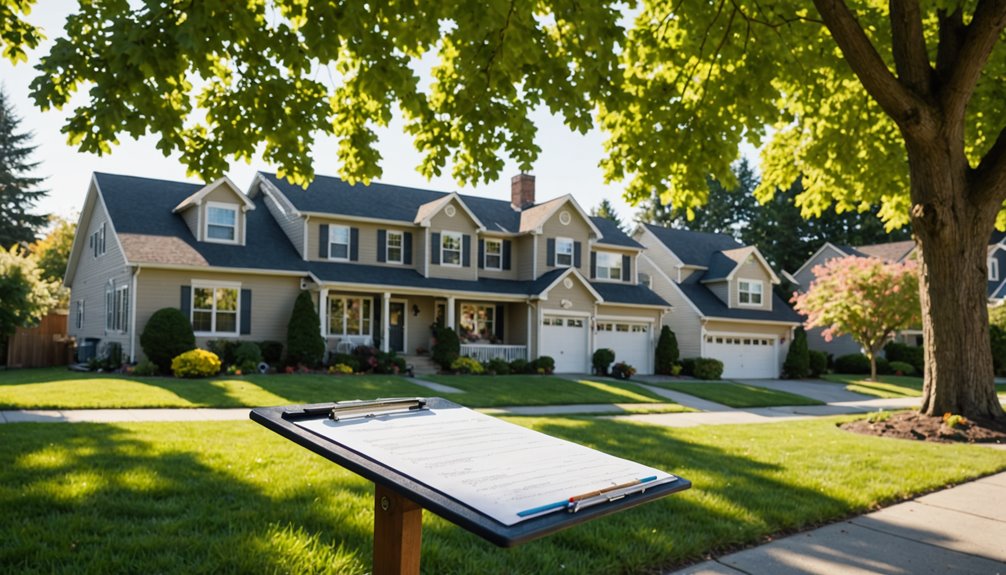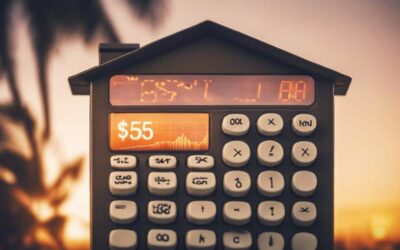As a Florida real estate broker, I’ve seen too many homeowners lose out because they didn’t understand the importance of a pricing strategy for selling a house. Some overprice their homes, hoping to get top dollar, only to watch them sit on the market for months. Others underprice and leave money on the table. Both scenarios can lead to frustration, stress, and missed opportunities.
Setting the right price for selling a house isn’t just about picking a number that “feels right.” It requires a detailed market analysis and a professional approach. Emotions or advice from friends often lead to unrealistic pricing that backfires. Instead, work with an experienced realtor or broker who can guide you through the process. By examining comparable sales, market trends, and your home’s unique features, they can help you set a price that attracts buyers and gets your home sold quickly.
A proper pricing strategy for selling a house can mean the difference between a smooth sale and a long, stressful process. Techniques like value range pricing or adjusting for market dynamics can position your home for success. Don’t take chances with one of your most significant assets—trust the expertise of a real estate professional to help you get it right the first time.
Essential Insights and Key Takeaways for Effective Home PricingKey Takeaways
- Conduct a comparative market analysis (CMA) to determine competitive pricing based on recent sales of similar properties in your area.
- Assess local market conditions to identify whether it’s a seller’s or buyer’s market, influencing your pricing strategy.
- Consider property characteristics like size, condition, and upgrades, as they significantly impact perceived value and pricing.
- Utilize advanced pricing techniques, such as value range pricing or bait pricing, to attract more buyers and stimulate competition.
- Avoid common mistakes like overpricing and ignoring market trends, which can lead to longer selling times and reduced interest.
Understanding Pricing Strategies
Navigating through the complexities of the authentic estate market requires a keen understanding of pricing strategies that align with current market conditions. Successful pricing hinges on a thorough market analysis, enabling sellers to discern whether they are in a seller’s or buyer’s market. In a seller’s market, heightened prices can be justified due to increased demand and limited supply. At the same time, competitive pricing becomes vital in a buyer’s market to attract interest amidst more excellent inventory.
Implementing competitive pricing strategies, such as setting a price slightly below market value, can generate multiple offers and create a sense of urgency among potential buyers. Employing value-based pricing allows sellers to emphasize distinctive features, justifying higher price points. Moreover, pricing for online searches and using cutting-edge techniques like price banding improve visibility and engagement. Understanding the importance of analyzing recent comparable sales can also provide crucial insights that inform pricing decisions. Additionally, being aware of market conditions helps sellers adapt their strategies effectively.
Advanced methods, such as dynamic pricing, which adjusts in real-time according to market trends, can further refine pricing strategies. By leveraging these tactics, sellers not only position their properties effectively but also foster a sense of belonging for potential buyers by meeting their expectations and needs in a fluctuating market landscape.
Key Factors Influencing Value
Several key factors contribute to the general market perception and desirability of a home when determining its value. Neighborhood characteristics, such as the quality of local schools, proximity to vital amenities, and low crime rates, significantly improve a property’s appeal. Furthermore, community developments like parks can increase property values, reflecting a vibrant and engaged neighborhood. Additionally, future development plans in the area can significantly influence long-term property values.
Property characteristics also play an essential role. Larger homes in good condition with modern upgrades command higher prices. Zoning regulations and the usability of space further influence desirability and value.
Market and economic factors cannot be overlooked; supply and demand dynamics directly affect property values, as do interest rates and local authentic estate trends. A robust economy with job growth fosters an environment where property values can thrive.
External influences, such as geographical location and parking availability, also impact how a home is perceived in the market. Understanding these elements allows sellers to position their property strategically in a competitive landscape. Ultimately, they align their pricing strategy with the inherent value of their home to attract potential buyers.
Importance of Comparable Sales

Understanding the importance of comparable sales is essential for establishing a competitive pricing strategy when selling a house. Recent sales data, along with properties that share similar characteristics, offer valuable insights into current market conditions and buyer expectations. By analyzing local market trends, sellers can make informed decisions that improve their property’s appeal and optimize pricing. Additionally, appraisers determine the best comparables for the assignment, ensuring they have similar physical and legal characteristics.
Recent Sales Data
Maneuvering the complexities of home pricing necessitates a keen awareness of recent sales data, which acts as a crucial compass for establishing a competitive market value. The volatile nature of real estate markets means that property values can fluctuate considerably, even within short distances. Consequently, leveraging recent comparable sales is critical to ascertaining that your home is priced in line with current market conditions.
Utilizing up-to-date sales data enables sellers to avoid outdated pricing strategies that could misrepresent a property’s genuine value. It reflects current trends and accurately captures shifts in buyer demand, allowing sellers to set realistic expectations. A well-executed comparative market analysis, grounded in recent sales, can not only improve pricing accuracy but also reduce the time a property spends on the market. Additionally, understanding market fluctuations is essential for adapting pricing strategies to meet buyer interests effectively.
Moreover, working with a knowledgeable real estate agent who understands the nuances of recent sales data can provide invaluable insights. Employing this information effectively can lead to a strategic pricing approach that resonates with buyers, fostering a sense of belonging within the community while guaranteeing a successful sale.
Similar Property Characteristics
Similar property characteristics cannot be overstated in the domain of real estate pricing; they serve as essential indicators for establishing a fair market value. Comparable sales, or “comps,” provide a reliable foundation for accurately pricing your home. When evaluating properties, it is crucial to consider neighborhood proximity, as even minor geographic variations can lead to considerable differences in value. Properties situated near desirable amenities, such as schools and parks, often command higher prices due to increased demand.
Moreover, the size and layout of comparable homes play a significant role in determining value. Properties with similar square footage and room configurations are necessary for accurate comparisons. Additionally, the condition of these homes, including recent renovations or distinctive features, can significantly influence pricing. Furthermore, a thorough understanding of market dynamics can help you adjust your pricing strategy effectively to reflect current buyer preferences.
Considering the dynamics of the market, such as time on the market and buyer behavior, improves your pricing strategy. A price grounded in thorough comparable analysis not only positions your property competitively but also fosters a sense of belonging for potential buyers, aligning their desires with a home that meets their needs and expectations.
Local Market Trends
Recognizing local market trends is crucial for setting an effective pricing strategy in genuine estate, as these trends greatly influence buyer behavior and property valuations. A central component of this analysis is examining comparable sales—properties similar to yours that have recently sold in the area. By evaluating these sales, you can determine a fair market price that resonates with potential buyers.
Key elements to take into account include the sale time frame, ideally within the last three months, and the proximity of these properties, typically within a quarter to half a mile. A sufficient number of comparable sales must be analyzed to guarantee accuracy. Local market conditions, such as inventory levels and average days on the market, also play an essential role in shaping buyer willingness. In November 2024, the average days on the market reached 37 days, reflecting a decrease of 7 days year-over-year, which may affect how quickly buyers are willing to act.
Pricing can be more aggressive in a seller’s market, while a buyer’s market necessitates a competitive approach. A comparative market analysis (CMA) will provide insights into current trends, ensuring your pricing reflects the immediate dynamics of your neighborhood. By leveraging comparable sales, you can create a pricing strategy that not only attracts buyers but also fosters a sense of belonging within your community.
Advanced Pricing Techniques
In the domain of advanced pricing techniques, value range pricing, and bait pricing strategies stand out as effective methods for attracting potential buyers. Value Range Pricing offers a flexible price range that can stimulate interest and create a sense of urgency. At the same time, Bait Pricing strategically sets an initial low price to draw in buyers, often leading to competitive bidding. Both strategies, when implemented thoughtfully, can significantly improve the marketability of a property and optimize the selling price. Additionally, employing a comparative market analysis can help determine the most effective price points for these strategies.
Value Range Pricing
While traditional pricing strategies often rely on fixed price points, Value Range Pricing presents a dynamic alternative that can significantly boost a seller’s ability to attract potential buyers. This method bridges the gap between a seller’s perceived value and a buyer’s tendency to present low-ball offers. By establishing a price range, sellers can engage a broader audience and potentially incite bidding wars, ultimately leading to a higher final sale price.
| Benefit for Sellers | Benefit for Buyers |
|---|---|
| Increased exposure to listings | Increased options available |
| Demonstrates pricing flexibility | Comfort in making offers |
| Avoids low-ball offers | There is less risk of offending sellers |
| Encourages competitive offers | Insight into market value |
| Allows market dynamics to set price | Clear negotiation starting point |
The effectiveness of Value Range Pricing is statistically supported. It produces sales from the lowest to the highest end of the range. For sellers, this strategy boosts visibility and creates a competitive edge in the market, making it a compelling choice for those looking to sell their homes effectively. By understanding and leveraging this pricing technique, both sellers and buyers can navigate the property landscape with greater confidence and clarity.
Bait Pricing Strategy
Bait pricing is a controversial yet intriguing approach in the genuine estate market. It involves setting a property’s listing price considerably below its actual market value to attract a larger pool of potential buyers. This tactic aims to generate competition, potentially driving the final sale price upward. However, the ethical and legal implications cannot be overlooked. Misleading buyers with a lower advertised price can erode trust in the industry and lead to significant reputational damage for agents.
Buyers often invest time and sentimental energy in properties that ultimately exceed their financial reach, creating frustration and disillusionment. Additionally, the practice may attract legal scrutiny, as agents face penalties for deceptive pricing tactics. To navigate these challenges, property professionals should prioritize accuracy and transparency in pricing. Providing realistic price guides based on thorough market research guarantees a fair representation of property value.
Ultimately, ethical conduct fosters trust and respect within the community, reinforcing the integrity of the genuine estate industry. By avoiding bait pricing, agents can cultivate lasting relationships with clients, promoting a more sustainable and thriving practice in a competitive market.
Considerations for Effective Pricing

Effective pricing of a house hinges on a thorough understanding of diverse market dynamics and strategic considerations. A detailed analysis of recent comparable sales (comps) is vital to gauge the local market’s pulse. Distinguishing between a seller’s and a buyer’s market allows you to adjust your pricing strategy accordingly, ensuring your home stands out.
Conducting thorough market research provides insights into local trends and economic indicators, recognizes seasonal fluctuations, and can optimize your pricing effectiveness. Competitive pricing strategies, such as positioning your home slightly below market value, can attract more potential buyers and encourage multiple offers, creating a sense of urgency.
Incorporating value-based pricing considerations, such as highlighting distinctive features and desirable amenities, can justify a higher price point. Moreover, utilizing psychological pricing techniques—like pricing just below a round number—can elevate perceived value.
As market conditions evolve, regularly reevaluating your pricing strategy is imperative. Should your home receive limited interest, a thoughtful price reduction can reignite buyer engagement without signaling desperation. By remaining adaptable and informed, you foster a pricing strategy that resonates with potential buyers, creating a welcoming atmosphere that encourages offers.
Common Mistakes to Avoid
 A successful pricing strategy has its pitfalls, and sellers must be vigilant to avoid common mistakes that can hinder their efforts. Overpricing is a prevalent issue, often arising from a lack of thorough research into local market trends and comparable sales. This misstep not only leads to extended market times but also diminishes buyer interest. Furthermore, ignoring current market conditions can result in pricing errors that are detrimental to the sale.
A successful pricing strategy has its pitfalls, and sellers must be vigilant to avoid common mistakes that can hinder their efforts. Overpricing is a prevalent issue, often arising from a lack of thorough research into local market trends and comparable sales. This misstep not only leads to extended market times but also diminishes buyer interest. Furthermore, ignoring current market conditions can result in pricing errors that are detrimental to the sale.
| Mistake | Consequence |
|---|---|
| Overpricing | Longer market time, reduced buyer interest |
| Ignoring market trends | Inaccurate pricing missed opportunities |
| Sentimental attachment | Overvaluation, pricing errors |
| Poor agent selection | Lack of expertise, misguided strategies |
| Failing to adjust pricing | Inability to compete in changing markets |
Sellers often overestimate the value of individual improvements, which can lead to significant financial losses. Choosing the right agent is vital; they should provide in-depth market analyses and set realistic expectations. By avoiding these common mistakes, sellers can create a competitive advantage and foster a successful transaction, ensuring they not only belong to their community but thrive within it.
Frequently Asked Questions
How Do I Determine My Home’s Market Value?
To disclose your home’s genuine worth, consider a meticulous evaluation utilizing comparable sales, market trends, and economic indicators. Engaging professional appraisers and real estate agents can illuminate nuances, ensuring an informed and tactical approach to valuation.
What Is the Best Pricing Strategy for a Quick Sale?
To achieve a quick sale, consider pricing slightly below market value, thereby attracting a broader buyer pool. Furthermore, emphasize distinctive property features and remain flexible for negotiations to foster a sense of urgency and desirability.
Should I Negotiate the Price With Potential Buyers?
Negotiating with potential buyers is akin to steering a dance; it requires grace and strategy. Engaging in negotiations allows you to uncover hidden interests, foster a sense of belonging and collaboration, and ultimately lead to a successful transaction.
How Often Should I Adjust My Asking Price?
Based on market feedback, adjust your asking price strategically, ideally within ten days of listing. Regular assessments of traffic offers and comparable sales will guide timely adjustments, enhancing your property’s appeal and market alignment.
What Impact Do Seasonal Trends Have on a Pricing Strategy for Selling a House?
Seasonal trends can significantly influence a pricing strategy for selling a house. For example, spring and summer often attract more buyers, allowing for slightly higher prices, while fall and winter might require more competitive pricing to stand out in a smaller market.







